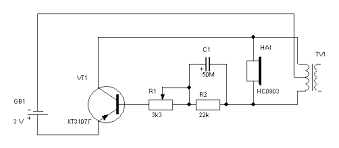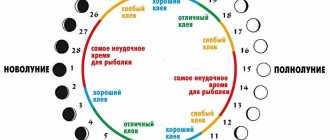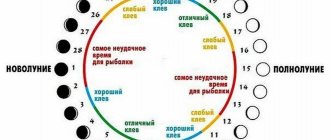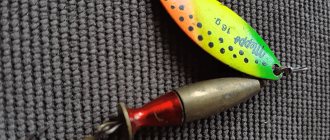Electronic lures with sound vibrations are gaining increasing popularity and demand among fishermen. As a rule, such devices have a high cost, so not all fishermen can afford to buy them, so they make alarms with their own hands, which will be much cheaper and also more reliable.
This article will describe in detail how you can make an electronic bait yourself, what is required for this, what are the advantages of such a device and much more.
Operating principle of electronic bait
Modern electronic baits are more effective than conventional baits and baits, since they attract fish in water bodies with the following features:
- sound or noise signals;
- light flickering;
- electromagnetic waves;
- acoustic sounds;
- mechanical work.
The sound waves produced by the electronic bait underwater travel over a very long distance.
The fish gets hooked because it follows that beep directly to that central location where the hook is. Thus, the fish seem to fall under the influence of sound waves and are lured to the required area in the reservoir.
In addition, in the place of fishing under water, you can install special small “crustaceans” with special attractive sounds, which attract not only small fish, but also larger specimens.
As you know, schools of small fish always attract large fish with their oscillations. This effect can also be set in an electronic bait and it will work to the fisherman’s advantage.
The sound range can be set from two hundred Hz to thirteen thousand Hz. Since absolutely all types of fish emit frequency vibrations, in order to determine the frequency at which this or that fish is caught, you need to set the frequency that this same fish emits.
According to the operating scheme, electronic baits can independently begin to emit waves and, accordingly, stop doing so. Also, the set of baits additionally includes a jumper, which is used for use in reservoirs with too low conductivity.
Both purchased and homemade baits are battery powered.
Principle of operation
The popularity of electronic baits is associated with their high efficiency, in which they cannot be compared with conventional baits. The reason for this is that they use four types of sounds simultaneously to attract fish. Along with light and acoustic devices, these devices create mechanical and electromagnetic vibrations. During extraction, sound can travel more than one kilometer. Thus, when a given signal reaches a fish, it has a desire to find the source of such signals. And, approaching the place where the fisherman is, very little time passes before she is hooked.
Large fish are interested in any sounds, including those emitted at low frequencies. They come from small crustaceans living in the reservoir. When feeding, small fish emit higher frequency vibrations , which attract larger fish. Typically, sounds emitted in a body of water have a range of about 200-13,000 Hz. Moreover, vibrations at their own frequency come from a certain type of fish. And therefore, when they hear “their” frequency, they swim to the source that emits it. For anglers, the frequency of sound can tell a lot: what kind of fish lives here and how many of its representatives there are.
Store-bought or homemade?
Each fisherman must independently determine what kind of bait he wants - purchased or homemade.
The fact is that a purchased bait will have numerous modes and functions, which cannot be said about the device that a fisherman will make, but on the other hand, if he is a good craftsman, then he will be able to make a no worse system.
In addition, a homemade bait will always cost several times less than a purchased one, which will significantly reduce the fisherman’s spending on his hobby.
Types of baits
Currently, there are many artificial baits on sale, among which the following are the most widespread:
- sound;
- electromagnetic;
- light
Sound electronic lures
Many anglers know that in the first winter months after the formation of a strong ice crust on reservoirs, perch is sensitive to the sound of a drilling ice auger. Therefore, those who fish in freshly drilled holes, as a rule, have a good catch. Special spinning baits also have a sound effect. A striking example is rotating spoons and hollow wobblers equipped with rattles.
Those who use quok to catch catfish ensure a good catch precisely due to sound vibrations. The fact is that this device produces sounds similar to the croaking of a frog, to which this fish does not remain indifferent.
Electromagnetic electronic lures
Today on the Internet you can find dozens of sites that sell special baits that use electrical and electromagnetic pulses. Although they are offered by different manufacturers, they still work on the same principle. After immersion in water, electrical and sound impulses, as well as mechanical vibrations, begin to emanate from them, thanks to which the fish strives for the source.
There are many video reviews online that show in detail how to use these devices. But everyone who has used them states that they are not able to provide a stable bite. In terms of their effectiveness, they do not meet the expectations of the owners. Marketers who skillfully present them benefit much more from these baits than fishermen who decide to buy such new items.
Light electronic lures
It is a well-known fact that fish react to light in water or on its surface. Therefore, those who have ever fished at night know that to improve the bite, it is advisable to light a large fire on the shore.
Quite popular among these newfangled tools are spinners and jigs coated with a light-accumulative composition , which increase the efficiency of catching bream, catfish and other fish at night.
Reservoirs are home to a large number of small fish whose scales are reflective. This assumption is easily confirmed on a sunny day: if bleaks or rudd live in the reservoir, they will easily attract the attention of the fisherman with their sparkling “clothes”. It can also attract a predator, for whom such a fish can become easy prey. This feature is used in many artificial baits, where this effect is provided by LEDs. Moreover, the use of such devices is quite simple, and the efficiency of use is very high.
Advantages of electronic bait
In its application, electronic bait has a number of advantages:
- Homemade bait, which is made by fishermen, significantly saves their money.
- If a fisherman uses electronic bait, then he simply does not need to cook porridge, prepare makukha or other bait, since the device successfully replaces all of this. In turn, this state of affairs significantly reduces the time spent on collecting and preparing the fisherman for fishing.
- The electronic bait, which you made yourself, has a very long distance for impact, which is very practical.
- Bait of plant or animal origin can only work and attract fish at a distance of up to six meters. Electronic bait can attract fish from the other end of the pond, which significantly increases the chances of a good catch.
- Baits of plant or animal origin only affect the taste buds of fish. Electronic baits can influence fish with light effects, sound or mechanical signals, which is much more effective.
- Electronic bait does not deteriorate as quickly as biological bait.
- This device does not require preliminary preparation, which takes a lot of time.
Two options for sound bait schemes for fish
The first version of the scheme for making bait for fishing is called “croaking bait”.
Its working scheme is as follows:
- The catch is lured to the right place with the help of special croaking sounds that the bait makes.
- Sound waves create two resistors that replace each other.
- This bait is powered by regular batteries, of which three will be enough for the device to operate for quite a long time.
- The sound in the device comes from an earphone taken from a phone or player, and which must first be prepared for safe lowering into the water.
- A second earphone is installed into the main body of the bait device for additional sound control.
- You need to use this bait like this: lower the earphone into the water on a long rope. At the same time, connect the bait for twenty seconds, and then turn it off. These actions should be repeated every thirty seconds.
- You can use this bait both in summer and winter.
The second version of circuits for making an electronic bait is called a “hydrophone”.
The scheme of its work is as follows:
- As you know, some sounds can not only scare away fish, but also attract them. One fisherman once noticed that the radio that was playing near him while fishing attracted a lot of perch, and decided to bring this idea to life by making a sound bait.
- For such a bait, which is used mainly for catching large fish, you need to record the sounds that this fish makes in the water using a hydroform and a tape recorder with a built-in sound volume amplifier and recording.
- Having recorded the necessary sounds, the fisherman must play them for at least half an hour so that the fish can hear them from afar and swim to the right place. It is important that the fish that is ready to wash does not have any interference, squeaks or other defects, since this can significantly affect the overall success of the fishing process.
- In addition, the hydrophone can also be connected to a player or mobile phone, or dipped into water. As a rule, the fish swims to a high-quality recording after ten or fifteen minutes.
- If there is a magnetic meridian or other interference nearby a body of water, this can significantly spoil the entire effect of the recording, since the fish simply will not “catch” it and will not bite.
- Recording high-quality fish sounds is a difficult task that requires practice and optics , so an inexperienced fisherman may not succeed the first time, but don’t stop, and sooner or later everything will work out as it should.
Advice: you don’t need to use the sound constantly at one fishing spot, since the fish will quickly lose all interest in these sounds. Each time you need to try to change the fishing location and the recording will start there. Making a good recording without interference and with the right signals is the most difficult task in this method. Beginner fishermen may not be able to do this.

Electronic fish bait “Bite”
Electronic fish bait “Klyov” is an innovative device that is used in fishing to lure any type of freshwater fish (both river and lake) to the fishing spot. It can be used for both summer and winter fishing. Operating principle:
The electronic fish bait “Klyov” generates sound vibrations with a variable frequency, which attract and lure fish to the fishing spot. As you know, fish show significant interest in various sounds and vibrations. Fish perceive sounds in the range from 25 Hz to 12'000 Hz. Acoustic and other vibrations of water are recorded not only by the inner ear (labyrinth), but also by the lateral line organ and skin receptors. Sound travels in water almost 5 times faster than in air - about 1,500 m/s versus 300 m/s and further, so in most cases it is not difficult for fish to determine its source. How to use: The sound emitter, which converts electrical vibrations into sound waves, is placed in water to a depth of at least 5 cm. Using the control knob (variable resistor), the desired frequency and nature of the sound for fishing is selected. It is recommended to remember the sound that led to the best result and use it in the future. The electronic bait “Klev” is effective for stationary fishing from bridges, the shore, or from ice in winter in combination with the use of bait. In this case, the sounds of the device indicate the presence of complementary food in a given place and collect fish to the fishing site. Everyone who has tried fishing with electronic bait has appreciated its effectiveness. We invite you to do this too! Specifications:
- The device has an operating mode switch and a stepless sound frequency control.
- The operating mode switch allows you to select modes: “0” – continuous sound emission; “1” – intermittent radiation with a frequency of 0.3 Hz.
- A smooth control allows you to adjust the sound wave generator in the frequency range: from 25 Hz to 12'000 Hz in both operating modes.
- Supply voltage – 9 V: one battery type 6F22 “Krona”, installed inside the device body, and it lasts up to 300 hours of continuous operation.
- Emitter wire length: 3 m.
- Dimensions: 90 x 100 x 45 mm.
- Weight: 150 g.
- Warranty: 12 months.
Please note that the hearing organ is developed differently in different fish.
Ide picks up sound vibrations within the range of 25...5'520 Hz, crucian carp and bream - within 25...3'840 Hz. Large fish swim to low frequency sounds of 200...400 Hz, which are emitted by crustaceans. And predators react to sounds made by fry within the range of 5'000...12'000 Hz.
Show full description
Information about technical characteristics, delivery set, country of manufacture and appearance of the product is for reference only and is based on the latest available information from the manufacturer.
The process of assembling an electronic fishing bait
The general process for assembling an electronic decoy is as follows:
- The first thing you need to start with is soldering and checking the circuit in action.
- Next you need to choose a suitable case. An ordinary plastic container for children's vitamins or other medicines is quite suitable for this. If you don’t have something similar at home, you can use any other similar molds.
- After this, you need to take the earphone and pull it through the cap of the container to the board itself, and then solder them together.
- Attach a plastic regulator in the form of a rod to the lid of the container in order to prevent rapid oxidation of the metal and its rusting. It is important to know that in order to preserve the overall balance of the bait, you should not attach any unnecessary regulators to the resistor.
- For the board, cut out a small circle of foam, which will divide it into two particles, the first of which will be intended for batteries, and the other for recharge.
- Using insulating tape, attach weights to the device so that it does not sink.
- Attach a hook to the mold . This way it will be much easier to throw the bait into the water by hooking the hook onto the fishing rod.
Device
The peculiarity of electronic baits is that they turn on themselves when immersed in water, and turn off when rising from it. Their design includes a jumper, which allows the use of these devices in reservoirs with low electrolytic conductivity. The operation of such a bait by a built-in rechargeable battery Moreover, it can be used for any models, regardless of whether you made it yourself or bought it in a store. Most often, one charge is enough for this device to work for 200 hours.











